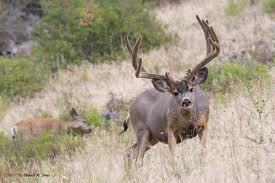"Big bucks don’t want to be found, and that’s exactly why they are so hard to find."
Have you ever wondered why some hunters are wildly successful while others--maybe even you--struggle?
Great news: I know precisely why. And the even better news is that the truth behind what makes some hunters successful, while others struggle, can be learned.
You may or may not know this, but when I was young, I couldn’t hunt my way out of a brown paper bag. I stumbled, failed, and learned a lot of lessons throughout the years. In fact, I’ve spent the decades since then perfecting those lessons, culling them down into a science.
I'm going to share my experience with you!
My book,
Blood in the Tracks, is the tale of my journey towards hunting success – the funny, exhausting, heart-stopping whole of it – PLUS the lessons it taught me, and how you can apply those lessons to your deer hunting.
In 170 pages, I unravel one of hunting greatest mysteries: trophy mule deer success. Why do some people seem to experience it almost effortlessly, while others seem to seek it continuously?
And is it possible to become a more successful hunter? The short answer is, yes. It takes some mind-shifting, some serious thinking, and even some hard-to-make habit changes – but in the end, you have the potential inside of you to achieve the success you crave.
Jim
Learn more here
http://jimcollyer.com/






+(4).jpg)


